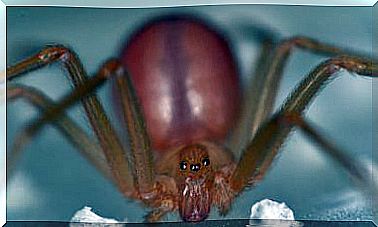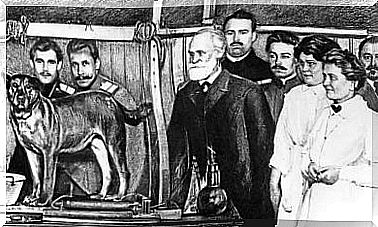Distemper Symptoms And Treatment In Dogs

Distemper in dogs is one of the most frequent diseases of recent times. Although it is not transmitted to humans, it has a high risk of contagion among dogs and a high fatality rate.
The spread of the distemper pathogen is related to the abandonment of animals in unhealthy environments. Overpopulation makes street-born puppies especially vulnerable. And they can easily acquire and transmit the disease.
Therefore, when rescuing an animal, it is essential to update its deworming and vaccination booklet. Strengthening your immune system is the most efficient way to preserve your health.
What is distemper in dogs?
Distemper in dogs in an infectious, viral and acute disease that affects the digestive and respiratory tracts. In more severe cases, it affects neurons and the central nervous system.

This disease is caused by a virus belonging to the Paramyxovirus family , of the Morbillivirus genus .
This microorganism is similar to the cause of measles in humans. It has remarkable resistance, being able to survive in hostile conditions and encapsulate itself for a long time before resuming its activity.
Thanks to its resistance, it has universal reach and worries veterinary professionals on all continents. It can affect dogs of all ages, breeds and sizes, but it is more common in puppies.
different symptoms
A puppy’s organism is more vulnerable and easier to be infected. Your immune system has not yet fully developed to deal with the numerous microorganisms in the external environment. Furthermore, the intense cellular activity in the growth phase facilitates virus replication.
Elderly and/or immunocompromised dogs are also more vulnerable to distemper and other infections. In these cases, the symptoms are usually more severe and the animal’s health condition declines rapidly.
The Paramyxovirus also affects commonly to other wild canids. This is the case of the wolf, the coyote, the jackal, the fox and the Dingo (Australian wild dog). In less common opportunities, it can be found in the bodies of otters, weasels and raccoons.
A high mortality rate
Distemper in dogs has generated alarm thanks to its high mortality rate and rapid evolution in the body. About 90% of dogs that contract distemper usually die. In addition, animals that manage to survive can suffer severe damage to their nervous system.
What are the symptoms of distemper in dogs?
The virus incubation phase usually lasts from 12 to 20 days. Usually, the first symptom of distemper in dogs is the presence of discharge and/or pus in their eyes and nose.
As the disease progresses, the following signs may appear:
- Fever
- Cough
- Tiredness, lethargy and/or excessive sleepiness
- Lack of appetite
- Diarrhea and vomiting
- Thickening of the paw pads
- Difficulty breathing or heavy breathing
Subsequently, the infected dog may experience malnutrition, dehydration and anorexia. In the most severe stage, the virus reaches the nervous system, causing spasms, convulsions and paralysis.
How is canine distemper transmitted in dogs?
Transmission is direct and the most common form of contagion is through the air. The dog breathes or ingests the pathogens that are present in the air around him. The air is often contaminated by the previous presence of an infected animal.
The contagion is also manifested through water and food infected by the virus. That’s why it’s important not to share your pet’s containers with unfamiliar dogs. Each animal must have its own environment and accessories to feed and hydrate itself.
Is there treatment for distemper in dogs?
There is no specific drug to eliminate Paramyxovirus from the dog’s body. Viral infections are often far more complicated to treat than bacterial or fungal infections.

Source: Hugo A. Quintero G.
The treatment given for distemper in dogs consists of strengthening the immune system, relieving symptoms and preventing secondary infections.
Early diagnosis is the key to increasing the animal’s chance of cure and recovery. Therefore, it is essential to immediately go to the veterinarian when recognizing changes in our pet’s behavior or organism.
How to prevent distemper in dogs?
Responsible ownership is the necessary attitude to prevent distemper in dogs. Respecting the vaccination schedule and periodically deworming them are essential preventive measures to preserve your pet’s good health.
Maintaining a balanced diet and exercising regularly are essential for the healthy development of all species.









